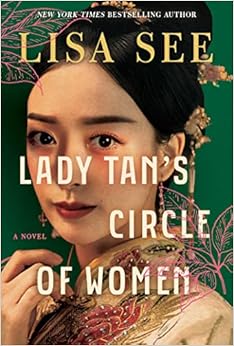4 Stars
Dora Frenhofer, an aging novelist, sees in herself signs of mental decline. Alone in London during the pandemic, she writes what she thinks will be her last novel. Using people from her own life (like her missing half-brother and her estranged daughter) and even people with whom she has had only brief encounters (such as a deliveryman and an immigrant hired to remove some of her possessions), she writes stories with them as protagonists. Interspersed among these stories are Dora’s diary entries.
What emerges is a complex character study. The diary entries might provide the most obvious insight into Dora’s personality, but the stories too reveal much about her as they suggest some of her regrets. She admits that “What linked those chapters was one character: a minor novelist in a minor crisis. This was a version of herself, but with the opportunity to behave differently somehow, to solve something.” Her relationships with her daughter and a former lover obviously weigh on her mind. Her character Danny, an anxious, insecure novelist, seems to reflect her own concerns about her own writing and lack of success.
Dora is not always a likeable character, but in the end it is difficult not to have some sympathy for her. She is blunt, a trait she attributes to her being Dutch, and often dismissive of people. She tries to be honest with herself – she acknowledges that she is a difficult and mediocre writer. She is ambitious and selfish in her pursuit of success as a writer, neglecting others for the sake of her career. When she meets other people she uses them to extract details she can use in her writing. Otherwise, she has chosen to isolate herself, “gradually shedding all her companions . . . in pursuit of her writing.” Now, having sacrificed so much for her art, she is obviously lonely. She also fears the dementia that her father endured.
The book is also about writing and the life of writers. Numerous types of writers make an appearance; they write novels, magazine articles, stand-up comedy routines, restaurant reviews, and memoirs. Most are insecure and worry about failing. Danny comments that he is “no more an artist than all the other imposters.” Dora’s stories show how writers can mine life experiences and transform them into fiction. And of course there’s the question of whether novelists have a place in today’s world. Is anyone reading books when there are so many distractions? Dora wonders, “can this (literature) coexist with that (screens)? . . . all these writers, all yearning to create something of moment despite its near-impossibility – do they too wonder where this fits anymore?”
The lines between Dora’s reality and her imagination are blurred, so readers of this novel are required to think as they read. Is Dora entirely truthful or is she an unreliable narrator? Do her stories reflect more accurately the truth about her life and choices and what is most important to her? Morgan pays a high price because of an article she wrote: does Dora feel she has lost as much because of her choices? Does the relationship between Amir and his half-brother Khaled tell us about Dora’s feelings/regrets/hopes about her relationship with her half-brother Theo?
I enjoy creative, thought-provoking novels like The Imposters. I’m sure there’s so much that I missed so I may re-read it when time allows. Like for Dora, “books remain among my pleasures, that anticipation before opening a cover, and anything could be inside, and you’ll never quite predict it. I’m still awed at others’ craft, how they patch together words, and produce people,” and Tom Rachman ranks amongst the best in his ability to do exactly that.
Note: I received a digital galley from the publisher via NetGalley.








